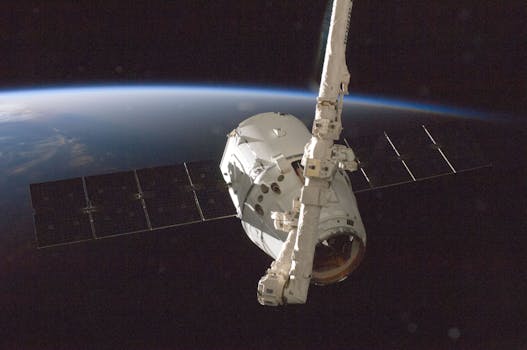
From Geostationary to Low Earth Orbit: The Evolution of Satellite Telecommunications in 2023
Satellite telecommunications have undergone significant transformations over the years, from geostationary to low earth orbit, revolutionizing the way we communicate and access information. From Geostationary to Low Earth Orbit: The Evolution of Satellite Telecommunications in 2023 is an exciting topic that has gained considerable attention in recent years. The shift from traditional geostationary satellites to low earth orbit (LEO) satellites has opened up new opportunities for satellite telecommunications, enabling faster, more efficient, and cost-effective communication services.
The traditional geostationary satellites, which orbit the Earth at an altitude of approximately 36,000 kilometers, have been the backbone of satellite telecommunications for decades. However, they have several limitations, including high latency, limited bandwidth, and high operational costs. In contrast, LEO satellites, which orbit the Earth at an altitude of around 160-2,000 kilometers, offer several advantages, including lower latency, higher bandwidth, and lower operational costs.
The Advantages of Low Earth Orbit Satellites
LEO satellites have several advantages over traditional geostationary satellites. One of the primary benefits is lower latency, which is the time it takes for a signal to travel from the Earth to the satellite and back. LEO satellites have a latency of around 20-30 milliseconds, compared to geostationary satellites, which have a latency of around 240-280 milliseconds. This makes LEO satellites ideal for real-time communication applications, such as video conferencing, online gaming, and virtual reality.
Another advantage of LEO satellites is higher bandwidth, which enables faster data transfer rates. LEO satellites can provide bandwidths of up to 1 Gbps, compared to geostationary satellites, which typically offer bandwidths of up to 100 Mbps. This makes LEO satellites suitable for applications that require high-speed data transfer, such as broadband internet, mobile networks, and cloud computing.
The Applications of Low Earth Orbit Satellites
LEO satellites have a wide range of applications, including broadband internet, mobile networks, cloud computing, and Earth observation. They can provide internet connectivity to remote and underserved areas, where traditional infrastructure is lacking. They can also be used to extend mobile networks, providing coverage to areas where traditional cell towers are not available.
LEO satellites can also be used for Earth observation, providing high-resolution images of the Earth’s surface. This can be used for a variety of applications, including environmental monitoring, agriculture, and disaster response. Additionally, LEO satellites can be used for scientific research, such as studying the Earth’s climate, weather patterns, and natural resources.
The Future of Satellite Telecommunications
The future of satellite telecommunications is exciting and rapidly evolving. With the advent of LEO satellites, we can expect to see significant improvements in communication services, including faster, more efficient, and cost-effective connectivity. The use of LEO satellites will continue to grow, with new applications and services emerging in the coming years.
The development of new technologies, such as satellite constellations and phased arrays, will also play a crucial role in shaping the future of satellite telecommunications. Satellite constellations, which involve launching multiple satellites into orbit, can provide global coverage and enable a wide range of applications, including broadband internet, mobile networks, and Earth observation.
Phased arrays, which are advanced antenna systems, can enable higher bandwidth and faster data transfer rates. They can also be used to improve the efficiency and accuracy of satellite communications, enabling better connectivity and more reliable services.






